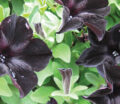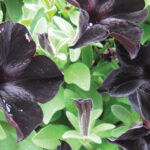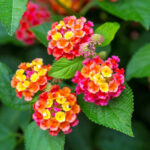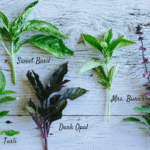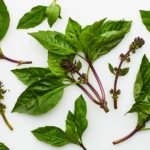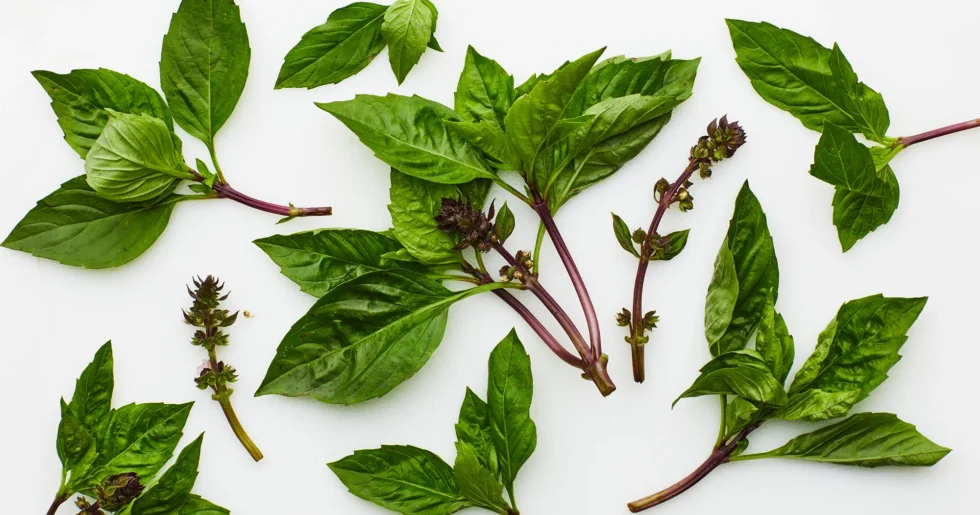
Thai basil (Ocimum basilicum var. thyrsiflora) is a renowned herb cherished in Southeast Asia for its unique flavor—sweet, spicy, and anise-like. The culinary and ornamental benefits make it a perfect choice for your garden. But it requires warm climates and certain settings to grow successfully. Provide care and the right conditions to attain a fresh supply of tasty leaves and enhance the flavor of dishes.
In this guide, we will be exploring everything associated with Thai Basil, its uses, how to grow it, and what can make it last longer.
What is Thai Basil?

The Thai basil plant is a variety of basil with purple stems and spicy, anise-flavored leaves. It thrives in warm climates and is commonly used in Southeast Asian cuisine.
Scientifically known as Ocimum basilicum var. Thyrsiflora, Thai basil is a vibrant herb renowned for its unique aroma and complex flavor. Being a prominent ingredient in Thai cuisine, it has become the most widely planted spice across the world, especially in Southeast Asia.
Unlike other varieties of Basil, Thai Basil carries a bold taste identical to anise, clove, and licorice; simply put, it offers sweet and spicy flavor at the same time. Due to its pungent aroma and refreshing zest, Thai basil elevates the taste of curries, soups, stir-fries, and noodles. Moreover, it is considered a holy ingredient in numerous hot dishes and thus has enjoyed popularity in cooking for many years around Thailand, Laos, Vietnam, and Cambodia.
Thai basil grows as green leaves across a purple stem, with purple flowers appearing in a cluster. The leaves are lance-shaped and smaller than those of other basil varieties, making them easily recognizable.
Key Information of Thai Basil:
| Attribute | Details |
| Botanical Name | Ocimum basilicum var. thyrsiflora |
| Common Names | Thai basil, Horapha (Thailand), Hun Que (Vietnam) |
| Family | Lamiaceae |
| Plant Type | Herbaceous; Perennial in warm climates, Annual elsewhere |
| Native Region | Southeast Asia |
| Mature Size | 12–18 inches tall, ~12 inches wide |
| Sun Requirements | Full Sun to Partial Shade |
| Soil Type | Moist, Well-drained |
| Soil pH Range | 6.5 – 7.5 |
| Bloom Time | Summer |
| Hardiness Zones | USDA Zones 10–11 |
Thai Basil Ideal Growing Conditions
Thai basil thrives in hot weather. There are a few ideal conditions that help the plant to grow better. Check them below:
- Warm climate: Thai basil grows best in warm and humid conditions and is prone to frost damage. Thus, it should be planted outside when the danger of frost is gone. In cold climates, it is best suited to grow indoors or in a greenhouse.
- Sunlight: Like any other plant, sunlight is crucial for the survival as well as the growth of Thai basil plants. It required 6-8 hours of direct sunlight every day. Good sun exposure ensures lush foliage and strong aroma, and flavor.
- Soil: Thai basil needs to be grown in lightly moist, slightly acidic soil, with a pH between 6.5 and 7.5, to achieve optimum growth. Try to enrich the soil with compost and other organic matter for healthy leaf production.
- Temperature: The ideal temperature for growing Thai basil is above 70°F (21°C) during the day and above 50°F (10°C) at night. It may struggle to thrive in sudden temperature drops or cold conditions.
Also Read: The Ultimate Guide to Aloe Vera Flowers: How to Make Your Plant Bloom
How to Plant Thai Basil For Unhindered Growth

Here are the most crucial steps to follow if you are planning to plant Thai Basil anytime soon. It may require a little patience and constant effort.
Step 1: Pick the Right Spot
First and foremost is the location where Thai basil is being planted. The place must receive continuous sunlight during the day. If you pick an indoor position, make sure it has enough sunlight and warmth; try picking a south-facing window to ensure the plant gets enough light.
The ideal temperature for basil plants to grow is between 70 to 90 degrees Fahrenheit (21 to 32°C). Try to keep the plant protected from frost and cold drafts.
Step 2: Prepare the Soil
Well-drained and a little acidic soil with a pH around 6.5 to 7.5 is perfect for Thai basil to flourish. So, prepare a soil that is loamy or sandy in texture, and enrich it with high-quality compost or some organic matter for a strong and healthy yield.
Step 3: Start with Seeds or Cuttings
Thai basil can be grown either using seeds or cuttings. If you are starting from seeds, sow them a quarter inch deep for about 4 to 6 weeks before the frost; an ideal location for sowing is indoors. Make sure the soil remains moist, and germination will begin within 5 to 15 days.
If you are using cutting, pick a healthy 4 to 6-inch section, cut right below the lead nodes, trim the lower leaves, and place it in a glass of water. It will take one to two weeks for roots to develop, after which you can transplant the cutting into well-drained soil.
Step 4: Transplanting Outdoors
Once you decide to place the Thai Basil outside, make sure to acclimate the indoor-grown seedlings by gradually exposing them to the outdoor climate. Move the plant outdoors when the temperature consistently remains above 50°F (10°C).
Make sure you space the plants 12 to 18 inches apart for proper airflow and growth.
Step 5: Ensure Regular Watering
Once planted properly, make sure to regularly water the plant, as Thai basil enjoys moisture. Keep the soil moist, but avoid water logging the plant. Try to water the plant at the base to avoid fungal diseases.
Step 6: Fertilizing Thai Basil
Though it is not a crucial step, a balanced organic fertilizer can do wonders for your plant. Add a fertilizer every four to six weeks, and not too often, because over-fertilizing can affect the flavor of leaves.
Harvesting and Pruning Thai Basil
Thai basil leaves can be harvested once the plant reaches a height of 6-8 inches. Collect the leaves at regular intervals for better growth. It is advised to harvest it in the morning before the sun is too harsh.
To harvest, it is better to use your finger or a clean pair of scissors. Cut just above a leaf node—the spot where two leaves grow from the stem. By doing so, you are enabling the plant to branch out better, resulting in a bushier and fuller plant.
Do not remove all the leaves; just leave two to three stems on each branch to let the plant photosynthesize and grow new stems.
A light harvest once or twice every week throughout the growing season will improve the production and prevent the plant from getting tall and leggy.
Also, regular pruning is crucial to encourage healthy leaves and prevent flowering, which can affect the flavour of leaves. Chop the top sets of leaves once a week to support branching.
Remove all the flower buds as soon as they appear, because flowers can shift the energy away, and this will result in reduced leaf production. This will also make the leaves taste bitter and alleviate the aroma.
Types of Thai Basil Hybrids to Select From

| Variety/ Hybrid | Flavor Profile | Leaf Appearance | Plant Size | Notable Features |
| ‘Siam Queen’ | Strong anise, slightly spicy | Large, glossy, dark green | Tall (up to 24″) | Award-winning, very aromatic, and high yield |
| ‘Queenette’ | Classic Thai basil taste | Smaller, narrow leaves | Compact (12–15″) | Best suited for containers. Offers dense growth |
| ‘Sweet Thai’ | Milder anise, slightly sweet | Medium-sized green leaves | Medium (18–20″) | Commonly found in nurseries; is quite adaptable |
| ‘Horapha’ | Authentic Thai (licorice-anise) | Medium dark green | Medium (18–24″) | Traditional Thai basil that is used in Southeast Asia |
| ‘Purple Thai’ | Spicy with strong licorice notes | Purple stems, green leaves | Medium | Strikingly bright color, and great for ornamental and edible use |
| ‘Cardinal’ | Floral, clove-like, slightly spicy | Ornamental red flower heads | Medium–Large | Best for both edible and ornamental uses |
| ‘Thai Magic’ | Balanced, aromatic | Deep green, smooth leaves | Tall (20–24″) | Has High vigor and bolt resistance. |
How to Manage Common Pests and Diseases in Thai Basil
There are a few challenges that can hinder the growth of Thai Basil; they are pests and diseases. Check the given information, and keep your Thai Basil safe and secure:
Common Pests
1. Aphids
They are black, brown, or green insects that usually appear on the new growth. They cause sticky honeydew on the leaves. To control them, spray some water, apply neem oil or an insecticidal soap, and introduce ladybugs.
2. Whiteflies
These small white insects fly up on the plant while it is disturbed. They cause yellow leaves and can be controlled with yellow sticky traps and by spraying neem oil.
3. Spider Mites
These microscopic plants cause yellow speckles or fine webbing on the leaves and can be checked by increasing humidity and applying neem or horticultural oil.
4. Japanese Beetles
These metallic green beetles chew the leaves, causing large holes. You need to pick them with your hands in the early morning and use row covers or natural repellents like kaolin clay.
5. Leaf Miners
Larvae that go inside the leaves make winding trails. It is needed to remove the affected leaves and spray neem oil to stop them.
6. Thrips
Small and slender insects leave scarred leaves and affect plant growth. Use blue sticky traps, prune the damaged area, and apply insecticidal soap.
Common Diseases
1. Downy Mildew
The yellow spots that appear on the top of the leaves with fuzzy mold that is gray or purple. To prevent this, improve airflow, do not wet leaves, and cut the infected part.
2. Fusarium Wilt
They cause wilting, yellowing from bottom to top, and brown streaks on the stem. It can not be cured; thus, you need to discard the infected plants and not use the same soil to replant basil.
3. Gray Mold (Botrytis)
It appears as fuzzy gray growth on stems and leaves when the conditions are damp or crowded. It can be prevented by careful pruning to improve airflow and remove the affected parts.
4. Leaf Spot (Fungal or Bacterial)
These are dark spots that are soaked in water. It can cause enlargement in leaves, forcing them to drop. To fix this, use copper fungicide. Avoid overhead watering and prune the affected area.
5. Root Rot
It is generally caused by overwatering or poorly drained soil. This rot turns the roots brown and mushy. So, let the soil dry between watering and make sure to arrange for optimum drainage.
6. Powdery Mildew
Mildew is a white and powdery coating on the leaves, causing dry and shaded areas. Provide more light exposure, prune the plant for better airflow, and use organic fungicides.
Conclusion
The vibrant color, health benefits, bold aroma, and popularity in Southeast Asian cuisine make this herb a staple across the world. But it requires constant care, attention, and a suitable environment to thrive.
Provide adequate sunlight, well-drained soil, and regular harvesting if you want to make the best out of this fragrant and flavorful herb. Add this herb to your garden to enhance the beauty and vibrancy of your garden.

Mark Spector is a passionate writer about gardening and home improvement. He has spent more than three years turning ordinary places into green, happy havens. Mark looks at every job with a fresh, down-to-earth view because he loves nature and is always interested in finding new plant varieties.
He wants to get people outside and involved with nature by writing about things like how to make a backyard garden better, trying out eco-friendly do-it-yourself projects, and seasonal plant care.
His favourite thing to do when he’s not writing or gardening is to look for new plants to love in botanical parks or on nature trails.



